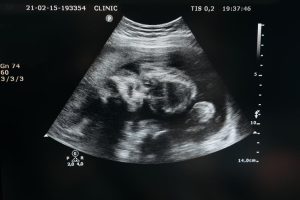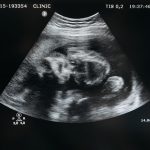WHAT IS F.A.S.T? LEARN ABOUT STROKE
Stroke is a “brain attack”. It can happen to anyone at any time. When you have a stroke, your brain isn’t getting the blood it needs. When this happens, brain cells are deprived of oxygen and begin to die. When brain cells die during a stroke, abilities controlled by that area of the brain such as memory and muscle control are lost. The sooner you get help, the less likely you’ll have serious, lasting problems. And the better your chance of recovery.
Types of stroke:
- MORRHAGIC STROKE: A brain aneurysm burst or a weakened blood vessel leak (hemorrhagic) is one of two types of stroke. While the least common of the two types of stroke it most often results in death.
- ISCHEMIC STROKE: A blood vessel carrying blood to the brain is blocked by a blood clot (ischemic) is one type of stroke.
- WHAT IS TIA? : When blood flow to part of the brain stops for a short period of time, also called transient ischemic attack (TIA), it can mimic stroke-like symptoms. These appear and last less than 24 hours before disappearing. Learn more about the signs, your risk, and TIA management.
Factors involved in stroke:
UNHEALTHY DIET AND NUTRITION: Bad eating habits increases risk of stroke. A healthy diet can help in reducing the risk of chronic diseases, improve your overall health, and help you reach or maintain a healthy weight.
- Eat more foods from plants, such as vegetables and beans, whole grains, and nuts.
- Eat more seafood in place of red meat, poultry, and eggs.
- Limit the intake of sodium, solid fats, added sugars, and refined grains.
- Reduce calories you eat and drink and increase calorie you burn through physical activity.
PHYSICAL ACTIVITY: No physical activity increases stroke chance. A recent study showed that people who exercise five or more times per week have a reduced stroke risk. The latest recommendations from the CDC on Physical Activity Guidelines for adults include the following:
- Moderate Activity: 150 minutes of moderate-intensity activity per week (brisk walking, water aerobics, bicycling) and 2 or more days a week of weight training exercises.
- Vigorous Activity: 75 minutes of vigorous-intensity activity per week (jogging, running, swimming laps) and 2 or more days a week of weight training exercises.
- Break it up: If you can’t fit a 30-minute activity in one time, break it up into 10-minute segments. Remember that all physical activity counts.
- Make physical activity fun: Walk or bike with a friend, take a dance class, and try different times of the day.
- Regular physical activity will improve your overall health and fitness, and reduce your risk for chronic diseases.
TOBACCO USE AND SMOKING: Smoking doubles the risk of stroke when compared to a nonsmoker. Smoking increases clot formation, thickens blood, and increases the amount of plaque buildup in the arteries.
ALCOHOL USE: Alcohol use has been linked to stroke in many studies. Aim to drink in moderation – no more than two drinks a day for men and one drink a day for women.
Medical factors:
- BLOOD PRESSURE
- ATRIAL FIBRILLATION (AFIB)
- HIGH CHOLESTEROL
- DIABETES
- CIRCULATION PROBLEMS
- CAROTID ARTERY DISEASE
Uncontrollable Risk Factors
Some risk factors for stroke are simply not controllable. But knowing what they are is still important in determining your overall risk for stroke.
- AGE: After the age of 55, stroke risk doubles for every decade a person is alive.
- GENDER: Women experience more strokes each year than men, mainly because women live longer than men and stroke occurs more often at older ages.
- RACE AND ETHNICITY: African Americans have twice the risk of stroke, partially because they are more susceptible to high blood pressure and diabetes. Hispanic and Asian/Pacific Islanders also have higher risk of stroke than Caucasians.
- FAMILY HISTORY: Your stroke risk increases if a family member (parent, grandparent, or sibling) has had a stroke or a heart attack at an early age.
- PREVIOUS STROKE: If someone experienced a stroke earlier they need to be extra careful with proper precautions.
- FIBROMUSCULAR DYSPLASIA (FMD): FM D is a medical disorder where some of the arteries that carry blood throughout the body do not develop as they should.
- PATENT FORAMEN OVALE (PFO): Strokes and TIAs can occur without any obvious risk factors because they are caused by a “hole” in the heart called a patent foramen ovale (PFO).
- TRANSIENT ISCHEMIC ATTACK (TIA): TIAs are brief episodes of stroke-like symptoms that can last from a few minutes to 24 hours, but usually cause no permanent damage or disability.
F.A.S.T. is an easy way to remember the sudden signs and symptoms of stroke
F: Face Drooping – Does one side of the face droop or is it numb? Ask the person to smile. Is the person’s smile uneven?
A: Arm Weakness – Is one arm weak or numb? Ask the person to raise both arms. Does one arm drift downward?
S:Speech Difficulty – Is speech slurred? Is the person unable to speak or hard to understand? Ask the person to repeat a simple sentence, like “The sky is blue.” Is the sentence repeated correctly?
T:Time to call Emergency – If someone shows any of these symptoms, even if the symptoms go away, call emergency and get the person to the hospital immediately. Check the time so you’ll know when the first symptoms appeared.
Beyond F.A.S.T. – Other Symptoms You Should Know
- Sudden NUMBNESS or weakness of face, arm, or leg, especially on one side of the body
- Sudden CONFUSION, trouble speaking or understanding speech
- Sudden TROUBLE SEEING in one or both eyes
- Sudden TROUBLE WALKING, dizziness, loss of balance or coordination
- Sudden SEVERE HEADACHE with no known cause
If someone shows any of these symptoms, immediately call emergency medical services
Get more information about stroke here:
- http://www.stroke.org/
- https://www.goredforwomen.org/
- http://www.webmd.com/
- Image credit: Image credit: www.cdc.gov
Author: Sumana Rao | Posted on: June 8, 2022
« Toenail fungal infection prevention tips Belching symptoms and cure »






















Write a comment